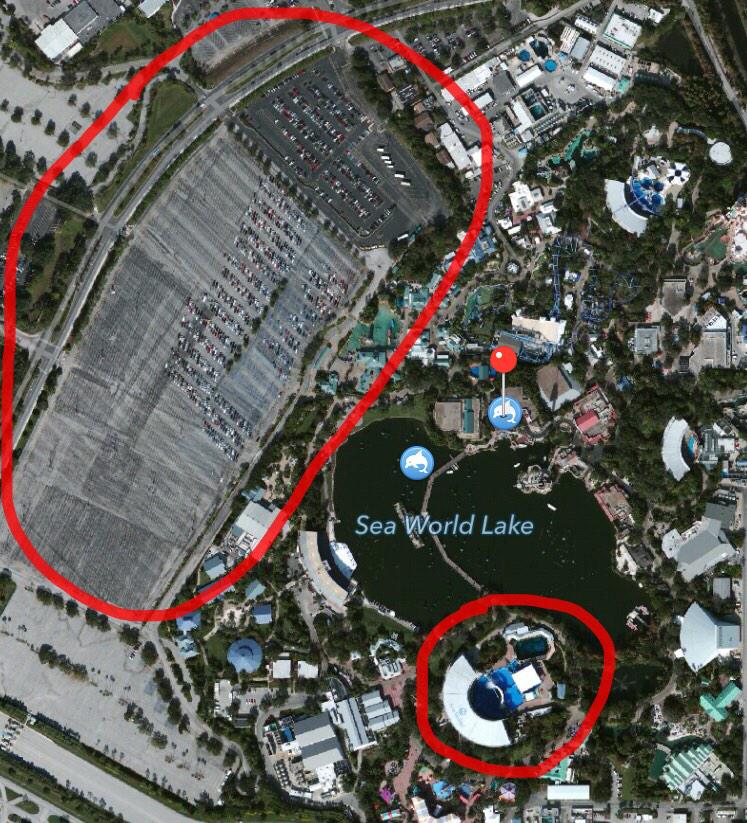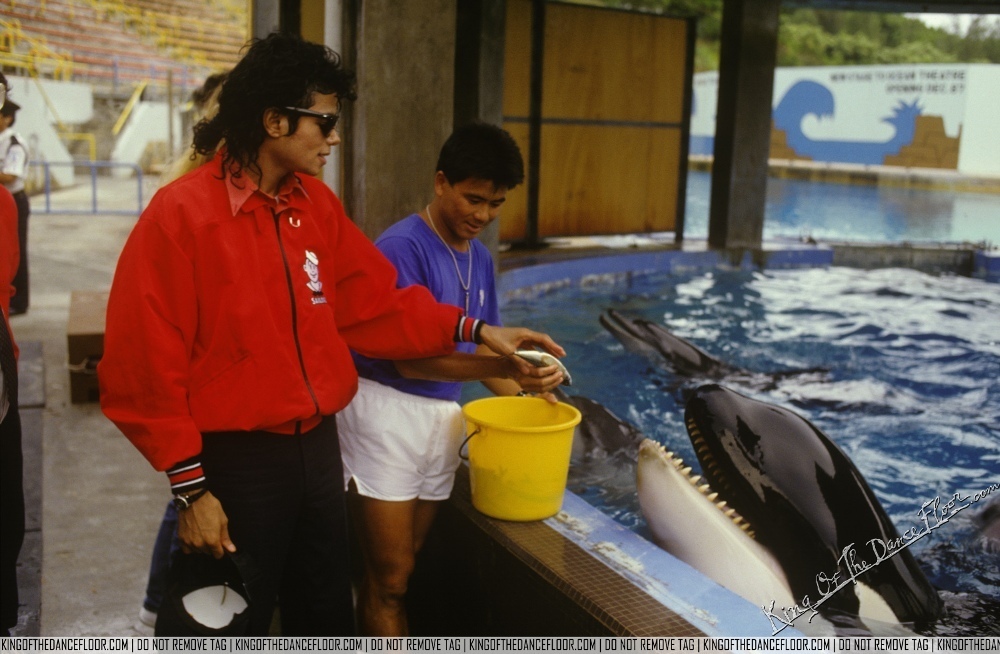Petition launched as 199 NGOs join Animals Asia to oppose Vietnam dolphin plan
18 November 2015
Animals Asia has been joined by 199 animal charities as a petition is launched against plans to build a dolphinarium in Danang, Vietnam.
Animal lovers across the world have been asked to add their name to the petition to show Danang city leaders that – despite what they may be told by investors – the world does not want more animal cruelty packaged as entertainment.
This coalition of campaigners believe that not only are dolphinariums cruel, they represent a misstep by Danang city leaders who, to date, have received praise for developing with environmental concerns in mind.
In the statement opposing the marine park, Animals Asia’s Animal Welfare Director Dave Neale said:
“There’s an ever-increasing body of research that shows capturing dolphins from the wild is cruel and causes a significant amount of suffering. Keeping dolphins and other cetaceans in captivity is harmful to them and increasingly it’s something that people don’t want to be a part of.
“It would be foolish to overlook the potential long-term economic effects of accepting the plans for a dolphin park. It could easily jeopardise future investment in Danang by investors who might see this as tarnishing Danang’s reputation as a progressive city. In addition – in one stroke – any hopes for developing eco-tourism would be gone.”
With the movie Blackfish having raised awareness in the west of the cruelty involved, exploiters of marine animals are already targeting new markets. Animals Asia believes Vietnam would be well-served not to invest in an industry that is both declining and discredited.
Since plans by a Russian company to build a dolphinarium in the central Vietnamese city of Danang were announced, Animals Asia – working with the Asia for Animals Coalition – has been putting pressure on city officials. You can read the letter sent to city leaders here.
The campaign is already prompting debate with Vietnamese newspapers having picked up on the campaign.
The 16 members of Asia for Animals Coalition are as follows:
Animal Guardians
Animal People
Animals Asia Foundation
ACRES
Blue Cross of India
Change for Animals Foundation
Earth Island Institute
Federation of Indian Animal Protection Organisations
Humane Society International
International Animal Rescue
International Fund for Animal Welfare
Philippine Animal Welfare Society
Royal Society for the Prevention of Cruelty to Animals (UK)
Sarawak Society for the Prevention of Cruelty to Animals
Society for the Prevention of Cruelty to Animals, Hong Kong
World Animal Protection
Also supporting the campaign are the following:
AAP Rescue Centre for Exotic Animals, NETHERLANDS
Action for Animals, KOREA
All Life In A Viable Environment, JAPAN
Andhra Pradesh Goshala Federation, INDIA
Anima, MACAU
Animal Conservation & Welfare Foundation, POLAND
Animal Friends, CROATIA
Animal Friends Niigata, JAPAN
Animal Nepal
Animal Projects & Environmental Education, MALAYSIA
Animal Protection Network, SWEDEN
Animal Rights Action Network, IRELAND
Animal Rights Alliance, SWEDEN
Animal Rights Centre, JAPAN
Animal Rights Hawaii, USA
Animal Sanctuary Trust, INDONESIA
Animal Welfare Institute, USA
Animal Welfare Network Nepal
Animals Australia
ARK Animal Refuge Kansai, JAPAN
Australia for Dolphins
Australians for Animals
Bali Animal Welfare Association, INDONESIA
Bali Sea Turtle Society (BSTS), INDONESIA
Behavioral & Environmental Solutions, USA
Beijing Pet Adoption Day, CHINA
Beijing Sunflower Friends of Animal Team, CHINA
Beauty without Cruelty, INDIA
Bharatiya Prani Mitra Sangh, Hyderabad, INDIA
Big Heart Foundation, RUSSIA
Blue Cross Youth Seva Sangham - Andhra Pradesh, INDIA
Born Free Foundation, UK
British Hen Welfare Trust, UK
Captive Animal Protection Society, UK
Cat Welfare Society, SINGAPORE
CATCHA Environmental & Wildlife Society, CANADA
Causes for Animals Ltd, SINGAPORE
Cee4life, AUSTRALIA
Centre for Orangutan Protection, INDONESIA
Cetacean Society International
Changchun 3.10 Shanxiao Fund, CHINA
Changsha Small Animal Protection Association, CHINA
Chengde Cat Forest, CHINA
Chengdu Home of Love Small Animal Rescue, CHINA
China Farm Animal Protection Coalition, CHINA
China Journalists Salon for Animal Protection, CHINA
China Youth Animal Protection Alliance, CHINA
China Zoo Watch, CHINA
Compassion Unlimited Plus Action, Bangalore, INDIA
CPR Environmental Education Centre, INDIA
Dalian VSHINE Protection of Animals SPCA, CHINA
Darjeeling Animal Shelter, INDIA
David Shepherd Wildlife Foundation, UK
Djurskyddet Sverige (Animal Welfare Sweden), SWEDEN
Dobro Surtse, BULGARIA
DOGSTOP, HONG KONG
Dolphin Project, USA
Dzivnieku Draugs, LATVIA
Egyptian Society of Animal Friends, EGYPT
Elephant Aid International, USA
Elephant Asia Rescue & Survival Foundation, HONG KONG
ElephantVoices, KENYA
Ente Nazionale Protezione Animali – Onlus, ITALY
Environment Films, UK
European Animal Protection Foundation / Europaeische Tierschutzstiftung, SWITZERLAND
FAADA, SPAIN
Fanciers Nanning Stray Cats, CHINA
Finnish Federation for Animal Welfare Organisations (SEY), FINLAND
For Elephants International
Four Paws, UK
Four Paws International
Friends of the Earth, MALAYSIA
Fuzhou Aixinyuan Stray Animal Rescue, CHINA
Fuzhou Small Animal Protection Center, CHINA
GAIA, Voice for the Voiceless, BELGIUM
Gansu Green Volunteer Home, CHINA
GREY2K USA Worldwide, USA
Greyhound Compassion UK
Grupo de los Cien, MEXICO
Guangdong the Best Volunteer Center, CHINA
Guangyuan Bo’ai Animal Protection Center, CHINA
Guangzhou Cat -Xi Xi Forest, CHINA
Hefei Kennel Association Care Center, CHINA
Help Animals India, INDIA
Himalayan Animal Rescue Trust, INDIA
HK Dolphin Conservation Society, HONG KONG
Huhhot Angel Guardian, CHINA
Iceland Animal Welfare Foundation, ICELAND
In Defense of Animals, INDIA
In Defense of Animals, USA
International Otter Survival Fund, UK
International Primate Protection League
Jakarta Animal Aid Network, INDONESIA
JBF India Trust, INDIA
Jinan Cattery, CHINA
Karuna Society for Animals & Nature, INDIA
Kathmandu Animal Treatment Centre, NEPAL
Korea Animal Rights Advocate, REPUBLIC OF KOREA
Korean Animal Welfare Association, REPUBLIC OF KOREA
Lanta Animal Welfare, HONG KONG
Lanzhou Street Animal Rescue Station, CHINA
Life Conservationist Association, TAIWAN
Lifelong Animal Protection, HONG KONG
Light of Life Veterinary Clinic, SINGAPORE
Love Wildlife Foundation, THAILAND
Lucky Cats, CHINA
Marine Connection, UK
MelbournDolphin, AUSTRALIA
moonbears.org
Nanchang Small Animal Protection Association, CHINA
Nanjing Ping An A Fu Stray Animal Rescue Association, CHINA
National Council of SPCAs. SOUTH AFRICA
Navale Consulting Group, INDIA
NY Class, USA
Ocean Care
Otara Foundation, SRI LANKA
Orangutan Aid, HONG KONG
Palawan Animal Welfare Association, PHILIPINNES
People For Animals – Chennai, INDIA
People For Animals – Hooghly, INDIA
Performing Animal Welfare Society, USA
Pet Orphans Home, CHINA
PETA, UK
PETA Asia, HONG KONG
PhaNgan Animal Care for Strays, THAILAND
Plant & Animal Welfare Society, INDIA
ProWildlife, GERMANY
Qingdao Society for the Protection of Animals, CHINA
RAKSHA - Voice of the Voiceless, INDIA
Rattle the Cage Productions, THAILAND
reEarth, BAHAMAS
Royal Veterinary College, University of London, HONG KONG
RSPCA Victoria, AUSTRALIA
Sahayog Organisation, Andhra Pradesh Goshala Federation, Hyderabad, INDIA
Save Animals Initiative Sanctuary Trust, INDIA
Save Vietnam’s Wildlife, VIETNAM
Shandong Yantai Caring Street Animals Rescue Shelter, CHINA
Sichuan Qiming Companion Animal Protection Cente, CHINA
SJZ One Meter More Love stray cats rescue group, CHINA
Society for Animal Welfare and Management, NEPAL
Society for Prevention of Cruelty to Animals – Penang, MALAYSIA
Society for Prevention of Cruelty to Animals – Selangor, MALAYSIA
Society for Prevention of Cruelty to Animals – SINGAPORE
Society for the Prevention of Cruelty to Animals (Xiangzhou, Zhuhai), CHINA
Soi Dog Foundation, THAILAND
Stiftung fuer Baeren / Foundation for Bears, SWITZERLAND
Stray Relief and Animal Welfare, INDIA
Sun Bear Centre – Kalimantan, INDONESIA
Swiss Animal Protection SAP / Schweizer Tierschutz STS / Protection Suisse des Animaux PSA, SWITZERLAND
Taiwan SPCA, TAIWAN
Thai Fund for Elephant Foundation, THAILAND
Thane SPCA, INDIA
The Cattitude Trust – Chennai, INDIA
The Corbett Foundation, INDIA
The David Sheldrick Wildlife Trust, KENYA
The Home of Love, CHINA
The Humane Education Trust, SOUTH AFRICA
The Welfare of Stray Dogs – Mumbai, INDIA
The Winsome Constance Kindness Trust, AUSTRALIA
Tianjin Common Home, CHINA
Together for Animals in China, CHINA
United Against Elephant Polo, INDIA
Vegan Virtues, AUSTRALIA
Vietnam Animal Welfare Organisation, VIETNAM
Voice for Zoo Animals, JAPAN
“We Are One Family” Charity Association of Chongqing Normal University, CHINA
Whale and Dolphin Conservation, UK
Wild Futures, UK
Wildlife Alliance, CAMBODIA
Wildlife in Need (and Active Environments), PHILIPPINES
Wildlife Protection Society of India, INDIA
Wildlife Rescue & Rehabilitation Centre, Bangalore, INDIA
Wildlife Salvation, SINGAPORE
Wolf Watch UK
Wuhan Small Animal Protection Association, CHINA
Xi’an Grenadine Companion Animal Rescue, CHINA
Xiamen Animal Protection Education Association, CHINA
Xiamen Pet Web, CHINA
Xinjiang Karamay City Street Animal Protection Centre, CHINA
YeuDongVat, VIETNAM
Zhangzhou Small Animal Scientifically Rescue Center, CHINA
Zimbabwe Conservation Task Force, ZIMBABWE
Zoocheck Canada, CANADA
Da Nang Animals Rescue Centre, VIETNAM
https://www.animalsasia.org/intl/me...mals-asia-to-oppose-vietnam-dolphin-plan.html

